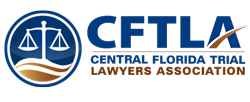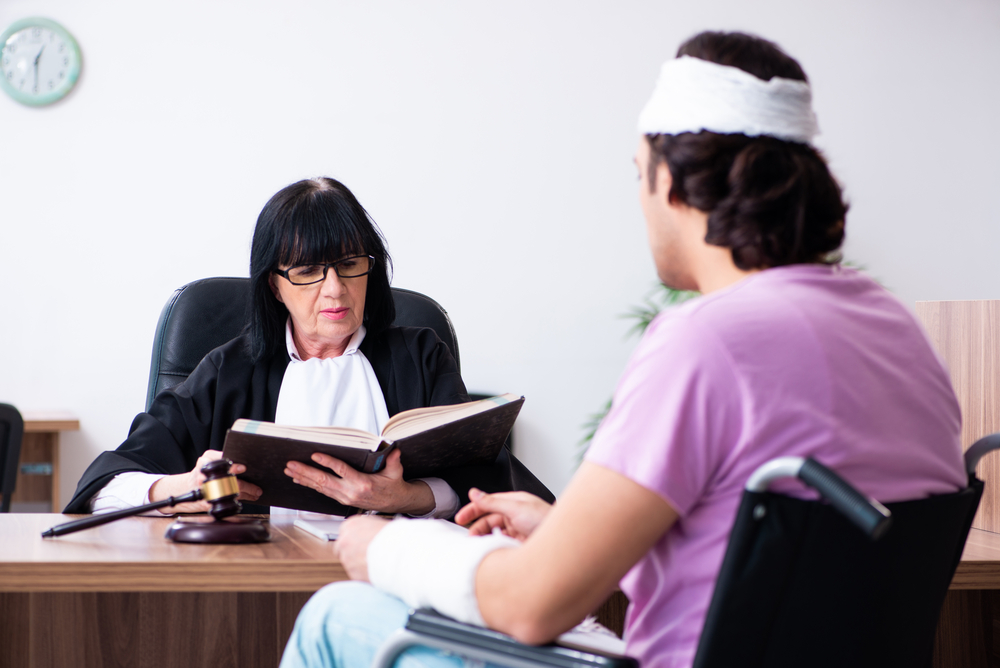Common Injuries In Florida Motor Vehicle Accidents
Every year, about three million people are injured in a motor vehicle accident. In Florida, more than 166,000 crashes led to an injury in one recent year. These injuries can range from minor bumps and bruises to serious, life-threatening injuries. If you or a loved one fell victim to injuries from a motor vehicle accident contact a skilled attorney to discuss your options.
Understanding the Physics Behind a Car Accident
To better understand how injuries from an accident occur and why certain crashes are more dangerous than others, it is helpful to understand some of the physics behind car accidents. In the event of an accident, there are multiple factors involved: the vehicle(s), the occupant(s), and any stationary or moving objects at the scene. Additionally, the car’s size, speed, and build, as well as the occupants’ age and size and whether they were wearing a seatbelt can all also play a role in the severity of an accident.
Even though it may feel like you are stationary when you are sitting in the front seat of a moving vehicle, you are actually moving at the same speed as the car. So, if you are driving your car at 55 miles per hour down the interstate, that means that your body is going that speed as well. Once you collide with another vehicle or object, your body will continue to move at 55 miles per hour until it is forced to stop by another object, often your seat belt or airbag. This impact can cause bruising, broken bones, or lacerations.
When it comes to rear-end crashes, the law of inertia comes into play. This law of physics states that an object at rest will stay at rest unless acted upon by another object. In simple terms, this means that if you are sitting in a stopped car and another car hits you from behind, your body will want to stay in the same place. In most cases, your head and neck are forced into the seat’s headrest before quickly jolting forward to catch up with the speed of the car. This often results in whiplash.
Most modern cars are designed to prevent occupants from absorbing most of the force during a collision. However, high-speed crashes and side-impact collisions still leave occupants vulnerable.
Common Injuries in a Motor Vehicle Crash
Whether you collide head-on with another vehicle or are hit from behind, there is always the risk of injury. The type of injury you sustain can vary depending on the type of collision you are in and whether you were utilizing your car’s safety devices. At the Law Offices of Jerry Jenkins, we know that any injury can be devastating. That’s why we work hard to get you the compensation you deserve.
Soft Tissue Injuries
You may not realize it, but there are probably several dangerous objects sitting in your car with you every time you start the ignition. While these objects may seem harmless, items like cell phones, sports equipment, books, and unsecured car seats can easily become projectiles in an accident. These objects can hit you, causing bruises, cuts, or more severe injuries.
Because of this, it’s important to store loose items in the trunk of the car, rather than in the passenger compartment, and to always secure any child seats, regardless of whether they are being used. Cuts and bruises can also occur when your body comes in contact with broken glass or hard objects. Severe lacerations can require stitches and may leave permanent scars. Always wear your seat belt to minimize the chances of hitting your car’s windows or windshield during an accident.
Head And Neck Injuries
Traumatic brain injury: Traumatic brain injuries can range from a mild concussion to a lifelong coma. TBIs occur as a result of a strong blow to the head or a penetrating object. In some accidents, the impact between the head and another object, such as the steering wheel or seat, can be severe enough to cause a TBI. Traumatic brain injuries are serious and need to be treated right away. Common symptoms of a TBI include:
- Dizziness
- Headaches
- Mood changes
- Sensory difficulties
- Slurred speech
- Numbness or tingling
- Memory issues
- Loss of consciousness
Whiplash: Whiplash most frequently happens in rear-end collisions. During a rear-end collision, the force of the impact causes the neck to rapidly flex backward and then extend forward while the rest of the body remains stationary. This unnatural movement frequently results in neck strains that can cause pain, tingling, and numbness. Whiplash is temporary and will usually go away within a couple of weeks. Common treatment includes pain relievers, massage, and chiropractic manipulation.
Bulging and herniated discs: Bulging and herniated discs can occur in cases of severe whiplash. Discs in your spine work to cushion your vertebrae. When you are in a car accident, these discs may crack or rupture, resulting in a herniated or bulging disc. Both types of injuries can cause chronic pain. In severe cases, surgical intervention may be necessary.
Spinal Cord Injuries
A spinal cord injury can have serious consequences. Depending on the location of the injury and the severity, a victim can suffer permanent or temporary paralysis. Spinal cord injuries are classified as either complete or incomplete A complete spinal cord injury results in full paralysis extending below the point of injury. With an incomplete injury, the patient may retain some movement or sensation below the injury. This may be confined to one side of the body or a particular limb. In most cases, a spinal cord injury results from bruising or swelling on the spinal cord. Common symptoms of a spinal cord injury include:
- Numbness
- Tingling
- Headaches
- Loss of movement
- Loss of bladder or bowel control
- Difficulty walking
- Pain or pressure on the spine
Broken Bones
Broken bones or fractures are some of the most common injuries to occur in car or motorcycle accidents. They can also be some of the most painful injuries. The type of injury sustained will depend on the angle at which the vehicle was hit and the position of the vehicle occupant’s body at the time of impact. These injuries may require braces, surgery, or other adaptive devices to fully heal. Common fractures include:
- Ribs: In a high-impact collision, the chest can be thrown against the steering wheel. The force of the accident can fracture one or more ribs. When the ribs are fractured, they also pose a risk of puncturing the lungs, which can be fatal if not immediately treated.
- Clavicle: The clavicle lies just below the neck and above the ribs on the front of the body. When you wear your seat belt correctly, it lies directly on top of the clavicle. Because of this, the force of an impact can cause a clavicle fracture. If the driver is not wearing a seatbelt, the impact of the steering wheel can also break their clavicle.
- Facial: The human face contains 14 bones, any of which can be fractured in the event of an accident. Facial breaks can occur as a result of flying objects or when the head hits a window or the steering wheel.
- Arms: The position of the arms during an accident put them at high risk of injury. This is especially true when the driver sees the accident coming and braces for impact.
- Legs: Like the arms, the position of the legs during an accident makes them prone to injury. Likewise, bracing for impact or slamming on the brakes can cause the leg to absorb more of the accident’s force, leading to a more severe break.
Burns
A severe accident can cause a fire or explosion, resulting in mild to severe burns. There are three different classifications of burns:
- First degree burns are superficial, affecting only the outer layer of skin. There are usually no blisters, but the victim may experience redness and pain.
- Second-degree burns involve the epidermis (the outer layer of skin) and some of the second layer of skin. They often result in severe blisters and may cause permanent scarring. These burns usually require medical attention as they may be prone to infection.
- Third-degree burns are the most serious type of burns. These burns affect both layers of skin and may affect the bones and muscles, as well. Victims who suffer third-degree burns will have scarring and may lose sensation in the burned area.
Psychological Injuries
Psychological injuries are some of the most frequently dismissed injuries that can result from an auto accident. Too often, we dismiss symptoms like fear, anxiety, and guilt as normal feelings to have after an accident. While experiencing these feelings, to a degree, is normal, when the symptoms of emotional trauma start to interfere with your day to day life, you may be facing a more serious problem.
Depression: It’s not uncommon to experience guilt or shame after an accident. Many times, drivers dwell over what they could have done differently. Severe injuries or the death of a loved one increase the risk of depression after an accident. Common symptoms of depression include:
- Trouble sleeping
- Headaches
- Feelings of helplessness
- Fatigue
- Difficulty concentrating
- Changes in appetite
Anxiety: If you find yourself constantly worrying about your personal safety, you may be suffering from anxiety. Anxiety may go away within a few months or last for years after the accident. Common treatment options include talk therapy and medication.
PTSD: PTSD is a persistent psychological condition that happens as a result of a traumatic event. Car accident victims may find it difficult to move on from the accident or suffer frequent flashbacks or intrusive memories of the accident. In many cases, the anxiety related to the accident will become so severe that the person avoids certain routes or avoids driving altogether. A doctor may prescribe medication or recommend therapy for someone with PTSD.
Understanding Florida PIP and Your Accident
Florida law requires all drivers to carry a minimum of $10,000 in personal injury protection. After an accident, this coverage can take care of the costs associated with medical treatment, regardless of who is at fault. After an accident, you will be asked to provide your auto information to your care provider. In most cases, the provider will submit the bill to the insurance and will pay 80 percent of the bill. You will be responsible for the other 20 percent. If your PIP insurance does not cover all costs associated with your injury, many providers will work with you to delay payment until you settle with the insurance company or a court issues a judgment. A personal injury lawyer can help you find health professionals who will work with you.
Know Your Rights When It Comes to Fair Compensation
A personal injury claim can help you move on from a car or truck accident and make it easier to pay for the costs associated with your injuries. Many factors go into a personal injury settlement, but common damages include:
- Medical bills, including doctor visits, surgeries, rehabilitation, physical therapy, and medication. Medical costs can also include medical devices, over the counter treatment, and alternative therapy options, including chiropractic care and massage.
- Lost wages for any time missed from work due to the accident, doctor visits, or recovery time. If your injuries are severe, you may also qualify for compensation for future earnings, diminished earning capacity, or vocational retraining.
- Pain and suffering, including physical pain, loss of enjoyment, loss of consortium, and mental distress.
A Florida Car Accident Lawyer Can Answer Your Questions

Regardless of what type of injury you have, an experienced personal injury attorney can help you fight for the compensation you deserve. Some injuries don’t just affect you physically—they can have an impact on your emotional and financial well-being as well. The goal of a personal injury claim is to get you back to as close to your pre-accident condition as possible.
Florida law protects car accident victims. You shouldn’t have to suffer or delay treatment because of someone else’s negligence. A personal injury claim can help you start the recovery process. If you have questions regarding a recent accident, contact an experienced personal injury lawyer to learn more about your rights.








